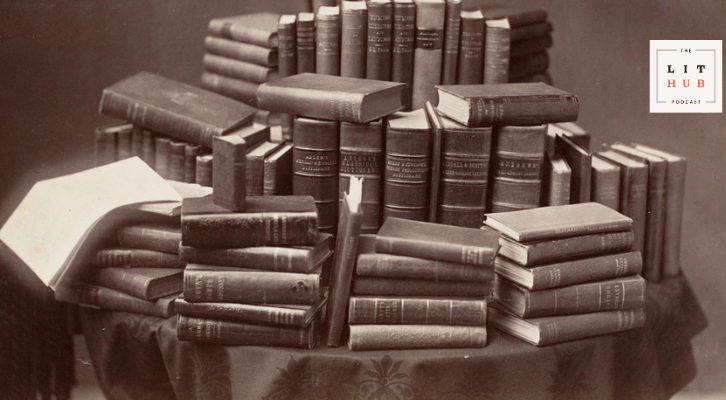Queen Elizabeth the First is considered one of England’s greatest monarchs for defeating the Spanish Armada and transitioning England from a debt-ridden regional power to a wealthy global power during her forty-four years on the throne.
However, she was also under threat of death for her entire reign.
Because no police force existed to protect her from these threats, Elizabeth created one—resulting in an early form of the secret service, a forerunner to MI5 and MI6.
One of the primary tensions in the plot of my new book, The Shakespeare Secret, is a belief by the queen’s secret service that the heroines’ clandestine effort to write plays is actually a plot against the queen. This belief places the three protagonists in mortal danger and an impossible position.
Why is such a misunderstanding plausible? Because the secret service was widespread, vigilant, and paranoid – and for good reason. Real plots boiled up as fast as the queen’s protectors could put them down.
Why, then, was Queen Elizabeth so threatened? Well, you can blame her famous father, Henry VIII. Henry was a headstrong ruler who desperately wanted a male heir. In his quest for a son, Henry orchestrated a series of dubious annulments and executions to put aside four of his six wives.
As England was a Catholic nation in good standing, these antics incited the wrath of the Pope. In the ensuing showdown, Henry broke with Rome to form the Anglican Church and threw his support behind the Protestant movement. These two factions—Catholic and Protestant—were generally at war. Literally.
Upon Henry’s death, his one male heir had already died, so his eldest daughter, Mary, took the throne. During her short reign, she attempted to return England to the Catholic fold through a violent pogrom. When Elizabeth succeeded her in 1558, she restored Protestant leanings but practiced religious tolerance—at first, anyway.
From the beginning of Elizabeth’s reign, England was a nation sharply divided by religion. Catholics dreamed of replacing Elizabeth with a Catholic ruler and saw Elizabeth as a soft target because, after all, she was a woman. Catholic nations—Spain in particular—vowed to support this dream with money and military might. Elizabeth was a woman under siege from day one.
Early on, her intelligence gathering apparatus was minimal and ad hoc. That all changed when the Catholics put forth Elizabeth’s cousin, Mary Queen of Scots, as the desired replacement for Elizabeth. Elizabeth had Mary imprisoned, which only made Mary a stronger magnet for conspiracy and plotting.
In 1569, Elizabeth put down an uprising of northern Catholic earls. Then, in 1571, an Italian banker, Roberto Ridolfi, concocted a plan to rescue Mary Queen of Scots, assassinate Elizabeth, and use a Spanish invasion force alongside English Catholics to put Mary on the throne. The plan fell apart almost by accident when an English Admiral, Sir John Hawkins, happened to hear about the plot from the Spanish ambassador whom he had befriended.
Realizing the extent and reality of the threats to her rule, Elizabeth decided that the current system was not sufficient to protect her. She turned to her Secretary of State—Francis Walsingham—for help. Intelligent, ruthless, and staunchly Protestant, Walsingham began to build a new kind of intelligence operation during an era that preceded modern policing and intelligence gathering. In doing so, he formed the first true secret service in England.
Walsingham posted spies abroad who would infiltrate foreign courts and supply him with intelligence on the politics and attitudes of Catholic countries towards England–and expose any plots. He scattered more spies throughout England, which helped him trace lines of communication between English and foreign Catholics. These lines of communication became the bright threads that unearthed plots against the queen before they could bear fruit.
As with today, spy work was often boring and mundane, with long periods of grinding observation that rarely led to a high-profile success. However, university graduates flocked to the positions, seeing it as a glamorous route to fame and fortune – a promise that rarely materialized.
The primary tools of these spies was the grooming of contacts who would willingly or unwittingly divulge useful information, and code-breaking. During Elizabeth’s day, sensitive information sent in letters was ciphered using a key, such as alphabet shuffling or number/letter substitution. An effective spy needed to intercept the letter, break the key, decipher the letter, and then send the letter on its intended route to avoid suspicion—all without ruining the wax seal.
Two of Walsingham’s key resources in these efforts were cryptographer Sir Thomas Phelippes and an expert on breaking and fixing wax seals, Arthur Gregory. These men worked together to foil at least two dramatic plots against the queen.
In 1583, Sir Francis Throckmorton, cousin to one of Elizabeth’s ladies in waiting, organized a plan to rescue Mary Queen of Scots, assassinate Elizabeth, and use a Spanish invasion force alongside English Catholics to put Mary on the throne. Yes, the same play that Ridolfi ran. Walsingham intercepted and decoded Throckmorton’s letters, foiling the plot and leading to Throckmorton’s execution.
This plot led Walsingham to form the “Bond of Association”—a group of men and women swearing to hunt down and execute anyone who attempted to usurp the throne. Yes—there was a Bond before James.
The bond was put to the test within two years when, in 1586, Sir Anthony Babbington made a plan to (say it with me) rescue Mary Queen of Scots, assassinate Elizabeth, and use a Spanish invasion force alongside English Catholics to put Mary on the throne.
Little did Babington know that Walsingham had placed a double agent, Gilbert Gifford, along with Phelippes, inside the castle where Mary Queen of Scots was imprisoned. With Mary’s trust, Gifford organized a plan to smuggle encrypted letters between Mary and Babington inside a beer barrel cork. However, he allowed Phelippes to intercept the letters.
On 7 July 1586, the only Babington letter that was sent to Mary was decoded by Phelippes. Mary responded in code ten days later ordering the would-be rescuers to assassinate Queen Elizabeth.
These letters ultimately led to the execution of Mary, Babington, and six other plotters. The execution of Mary led to a Spanish invasion attempt—the famed Spanish Armada. When Elizabeth’s navy and nasty English weather sent the Armada limping home, plots against her tailed off—for a while.
When Walsingham died in 1590, Robert Cecil took the reins of the spy ring. It was one of his spies who, in 1601, caught wind of a revolt brewing from one of Elizabeth’s court favorites, the Earl of Essex. When Essex began a march on the queen’s residence, Cecil put out word that Essex was a traitor, which evaporated his support. True to the Bond of Association, Essex was put to death two weeks later.
Thanks largely to Elizabeth’s foresight in creating a loyal and effective secret service, she died in 1603—of old age. However, her secret service lives on in some form or another to this very day.
***


















